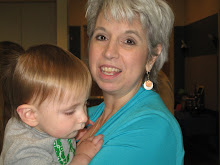Sheep Shearing day at the Twin Springs Farm in Avonmore, PA. My friend, Joanna and her friend, Nancy went with me out to Bill and Sandy's farm for the annual sheep shearing. We picked, sheared and skirted 52 ewes and 2 neutered males.
Here's what I learned about the process:
First you identify what sheep you want to shear; place a halter on her and take her over to the shearing location.


While you and your sheep wait in line, your co-workers will help you pick the straw off the sheep so that the fleece is cleaner after it is sheared.



The beautiful collie in the picture is Murphy. Here are pictures of our hosts as well: Bill in the red plaid coat, Sandy in the hat, and the unnamed kitty.




Once your sheep is picked, you bring it in the shearing house and give it to a person who holds it by the halter or in his/her lap, in some cases. That wrangler ties a blue tie with a unique number onto a clump of fleece on the ewe's back so that the fleece can be recorded and identified when shorn. Here I am holding one of the whethers (neutered male). Please note the young wrangler texting with her sheep. Didn't know sheep could read....



When it is that sheep's turn, the wrangler gives the sheep to the shearer who does his job, often wrestling with it.



The fleece is taken from the shearing floor and brought up to the wire table where it is shaken and "skirted." This means the loose fleece pieces are picked off and the dirt and any other vegative material is plucked off.


When the fleece is skirted, it is folded and rolled and placed in a plastic bag. The ewe's name and number are placed on a piece of paper and placed in the bag as well.
After the sheep is sheared, the second shearer trims its hooves. The sheep is then haltered again and led out to the pasture.

When all the shearing is completed, the helpers purchase their fleeces and we all go in and eat a sumptious meal.

Thank you little ewes and Sandy and Bill. We had a wonderful day!


Oh, and by the way, most of the ewes are pregnant so we will be going back in May to see all the new lambs!








































































